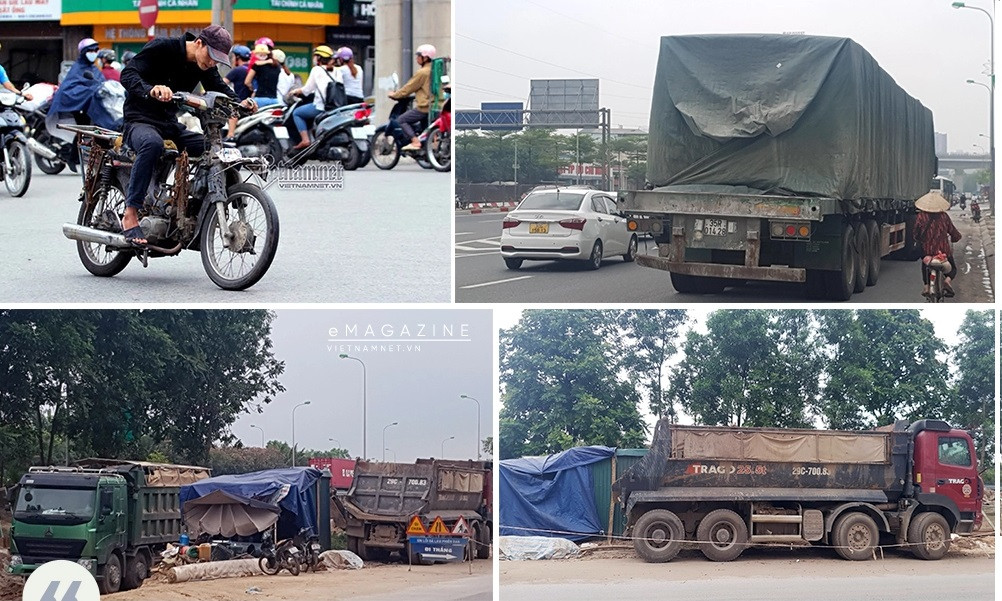
Air pollution and fine dust is a cross-border issue with no limit in space and time, he said. Emissions can originate from one locality but another locality may suffer as materials in the air are moving constantly.
“Fine dust originates from production activities, the burning of straw and domestic waste, and dust from construction sites, industrial workshops and thermal power. It is called primary dust. The situation has existed for a long time and will never end because production activities are maintained in society."
According to Tung, foreign investors strictly follow regulations set by the State and by themselves. Construction sites are installed with supervision tools to measure noise, dust and vibrations, and data are sent to appropriate agencies.
The cost of the installation of the equipment is not high and is
considered as an input production cost.
Besides, many other supervision tools exist, including transport camera systems, vehicle dashcams and cameras at people’s homes. These help management agencies easily track down subjects that cause pollution.
The question is why mountainous areas such as Cao Bang and Bac Kan still have extremely poor air quality some time, even though they don’t have many factories or construction works and have a lower number of vehicles compared with large cities.
Tung said that pollution depends on many factors, including the burning of waste, agricultural by-products and forest fires.
In some localities, the volume of domestic waste is not big enough to build waste treatment plans and waste-to-electricity plants, and the solution they choose is building an incinerator in each commune. This needs to be reconsidered.
In 2019, the number of days with extremely poor air quality in Hanoi accounted for over 30 percent of total monitored days. Of these, fine dust (PM2.5) is the most dangerous as it can penetrate deeply into human lungs, and affect the respiratory and vascular systems.
The major cause behind air pollution in Hanoi is emissions from transport (there are 6 million motorbikes and 800,000 cars in Hanoi), industrial production activities at factories and craft villages, urban construction and the burning of straw after harvests.
Hanoi in recent years has experienced rapid growth and the entire city is like a construction site, causing high sources of dust.
Weather is not the cause behind pollution, but it is a factor that leads to an increase or reduction of dust concentration spread by human activities.
Noting that state management agencies have been perfecting the legal framework on management of pollution, Hung said it is necessary to concretize legal documents to be sure that they can be brought into life, which serves as a foundation for officials to implement their tasks.
Vietnam now has one code, one degree and one circular related to environmental protection.
Many measures have been applied and legal documents have been issued to control sources of waste. There is also the PM’s Decision 985a approving the national action plan on air quality management by 2020, with a vision towards 2025.
However, according to Tung, the application of measures to minimize pollution has been slow and not very effective.
The Prime Minister, for example, some years ago released a decision on controlling motorbike emissions, but the problem has not been solved because enforcement is not strict. Farmers are asked not to burn straw, but burning occurs daily, while chimneys at production workshops in craft villages still emit smoke into the air.
He said that it is necessary to strictly control emissions of 25 coal-fired thermo-power plants and plants to be built in the future, the emissions of 60 cement plants, and the same number of steel mills. It is also necessary to handle craft villages that recycle paper, metal and plastics, and crack down on straw burning. Only when comprehensive measures are applied will the problem be solved.
Since 1990, Vietnam has had an automatic monitoring system in association with periodic monitoring, and taking of samples for analysis at laboratories. This shows that the country is aware of the importance of air monitoring to obtain data and assess air quality.
However, after many years, the air monitoring system still has not developed as expected. There are only seven national monitoring stations. Hanoi, BacNinh and QuangNinh have installed monitoring stations, but data from the stations are not shared.
Kien Trung